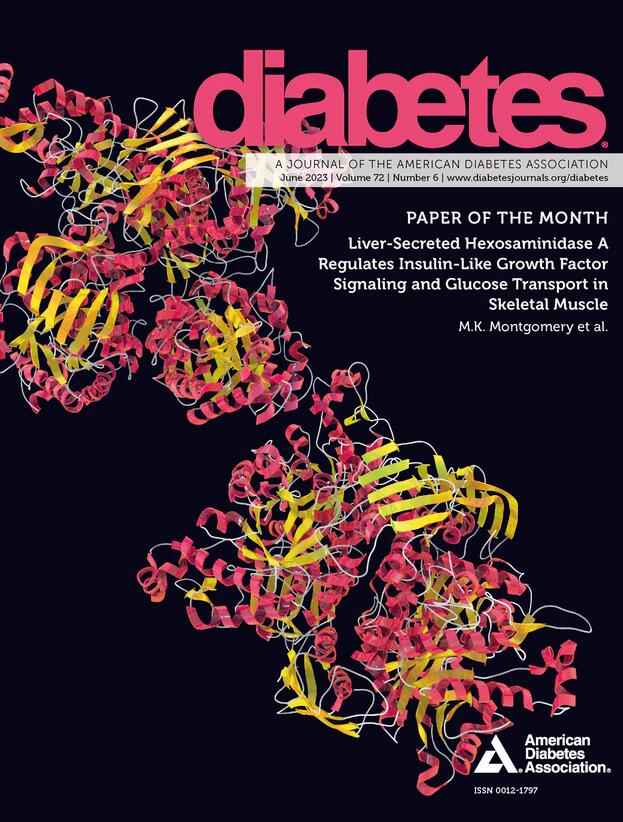Identifying four obesity axes through integrative multi-omics and imaging analysis
IF 6.2
1区 医学
Q1 ENDOCRINOLOGY & METABOLISM
引用次数: 0
Abstract
We aimed to identify distinct axes of obesity using advanced MRI-derived phenotypes. We used 24 MRI-derived fat distribution and muscle volume measures (UK Biobank, n= 33,122) to construct obesity axes through principal component analysis (PCA). Genome-wide association studies were performed for each axis to uncover genetic factors, followed by pathway enrichment, genetic correlation, and Mendelian randomization analyses to investigate disease associations. Four primary obesity axes were identified: (1) General Obesity, reflecting higher fat accumulation in all regions (visceral, subcutaneous, and ectopic fat); (2) Muscle-Dominant, indicating greater muscle volume; (3) Peripheral Fat, associated with higher subcutaneous fat in abdominal and thigh regions; and (4) Lower Body Fat, characterized by increased lower-body subcutaneous fat and reduced ectopic fat. Each axis was associated with distinct genetic loci and pathways. For instance, the Lower Body Fat Axis was associated with RSPO3 and COBLL1 which are emerging as promising candidates for therapeutic targeting. Disease risks varied across axes: the General Obesity Axis correlated with higher risks of metabolic and cardiovascular diseases; the Lower Body Fat Axis appeared protective against type 2 diabetes and cardiovascular disease. This study highlights the heterogeneity of obesity through the identification of obesity axes and emphasizes the potential to extend beyond BMI in defining and treating obesity for obesity-related disease management.通过综合多组学和成像分析确定四个肥胖轴
我们的目的是利用先进的mri衍生表型来确定不同的肥胖轴。我们使用24个mri衍生的脂肪分布和肌肉体积测量(UK Biobank, n= 33,122),通过主成分分析(PCA)构建肥胖轴。对每个轴进行全基因组关联研究以揭示遗传因素,随后进行途径富集、遗传相关性和孟德尔随机化分析以调查疾病关联。确定了四个主要的肥胖轴:(1)全身性肥胖,反映了所有区域(内脏脂肪、皮下脂肪和异位脂肪)较高的脂肪积累;(2) muscle - dominant,表示更大的肌肉体积;(3)外周脂肪,与腹部和大腿区域较高的皮下脂肪相关;(4)下体脂肪,特点是下体皮下脂肪增加,异位脂肪减少。每个轴与不同的遗传位点和途径相关。例如,下体脂肪轴与RSPO3和COBLL1相关,它们正在成为治疗靶向的有希望的候选者。疾病风险各轴不同:一般肥胖轴与代谢和心血管疾病的高风险相关;下体脂肪轴似乎对2型糖尿病和心血管疾病有保护作用。本研究通过确定肥胖轴强调了肥胖的异质性,并强调了在肥胖相关疾病管理中定义和治疗肥胖的潜力,而不仅仅是BMI。
本文章由计算机程序翻译,如有差异,请以英文原文为准。
求助全文
约1分钟内获得全文
求助全文
来源期刊

Diabetes
医学-内分泌学与代谢
CiteScore
12.50
自引率
2.60%
发文量
1968
审稿时长
1 months
期刊介绍:
Diabetes is a scientific journal that publishes original research exploring the physiological and pathophysiological aspects of diabetes mellitus. We encourage submissions of manuscripts pertaining to laboratory, animal, or human research, covering a wide range of topics. Our primary focus is on investigative reports investigating various aspects such as the development and progression of diabetes, along with its associated complications. We also welcome studies delving into normal and pathological pancreatic islet function and intermediary metabolism, as well as exploring the mechanisms of drug and hormone action from a pharmacological perspective. Additionally, we encourage submissions that delve into the biochemical and molecular aspects of both normal and abnormal biological processes.
However, it is important to note that we do not publish studies relating to diabetes education or the application of accepted therapeutic and diagnostic approaches to patients with diabetes mellitus. Our aim is to provide a platform for research that contributes to advancing our understanding of the underlying mechanisms and processes of diabetes.
 求助内容:
求助内容: 应助结果提醒方式:
应助结果提醒方式:


